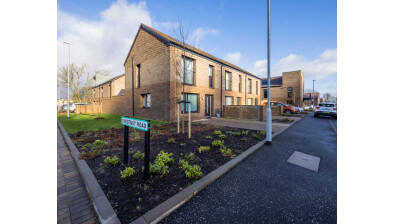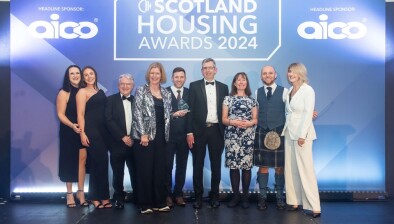Council defends Link’s plans to clean up former Ravenscraig Hospital site
Link Group and Inverclyde Council have refuted calls for a social housing development on the former Ravenscraig Hospital site to be halted over claims that the land is contaminated.

Last year, Link Group confirmed its plans to build 198 homes on the Greenock site in a development worth around £24 million.
However, earlier this month, a contamination expert accused Link of putting cost-cutting above health and safety and questioned Link’s “failure to address a catalogue of ongoing concerns”.
Professor Andrew Watterson told the Greenock Telegraph that a remediation strategy, prepared for Link by engineering consultants Fairhurst, states that “non inert/hazardous waste will incur higher rates of landfill tax” if removed from the site.
This led Cllr Chris McEleny, leader of the SNP group on Inverclyde Council, to call for a re-examination of the application.
Responding to the call, Inverclyde said many brownfield sites need to be cleaned up before they can be redeveloped and this is the case with the former Ravenscraig Hospital site.
A spokesperson said: “There is nothing unusual about the former Ravenscraig Hospital site. It is very similar to many other brownfield sites which have successfully been brought back into use using exactly the same techniques as those that are being proposed in the clean-up plan developed by Link Housing Association.
“The most important point, in terms of contaminated land is that, if pollution is present, it can only be harmful if there is some way for the people using the site to come into contact with it. If there is no way for the people to come into contact with the pollution, then it cannot cause them any harm.
“Various different methods can be used to prevent people coming into contact with the pollution on a site. In many cases these methods involve creating a barrier, which stops people coming into contact with the pollution, rather than treating it or removing it. This is a highly regulated and nationally accepted approach to bringing a brown-field site back into use.
“This method is called ‘capping’. Referring to capping as a ‘controversial’ technique is incorrect. It is a well-recognised and widely used clean-up strategy.
“The clean-up plan indicates that a capping membranes with a minimum lifespan of 60 years will be used. But this isn’t the only feature of the engineered system which will consist of three layers including a 600mm thick layer of clean soil. The engineered capping system will also be monitored and reinstated if it gets damaged.
“As a planning authority we are familiar with the wide range of technical guidance, specifications, standards, toxicological data and research publications that need to be considered to ensure best practice in assessing and cleaning up land.
“The key to cleaning up a site is breaking the possible pathways between humans and possible contaminants. How this is done is irrelevant as long as it is effective. If there are carcinogens on a site they are harmless if no one comes into contact with them and burying them and sealing them in is an effective way of doing this.
“All of the appropriate planning procedures have been correctly followed. It is now up to Link Housing Association to ensure that it complies with all the conditions in the planning permission.”
A spokesperson from Link told Scottish Housing News: “We welcome the council’s statement as it dispels misinformation around the remediation plans and gives much-needed clarity to the public, whose safety has always been paramount in developing the proposals.
“The council confirms Link has prepared a remediation strategy which is in line with all current legislative guidance and has been approved by Inverclyde Council’s Contaminated Land Officer. This Remediation Strategy will be implemented and monitored to ensure it complies with the conditions pertaining to the planning consent for the site.
“The council’s approval has brought the delivery of the first Phase of 149 much needed affordable family homes a step closer to reality, in a housing development where placemaking has been intrinsic to the high-quality design proposed.
“In the New Year, we will consult with local people and other stakeholders to gather feedback on areas proposed for a community woodland and how best this can be used as a community asset.”









